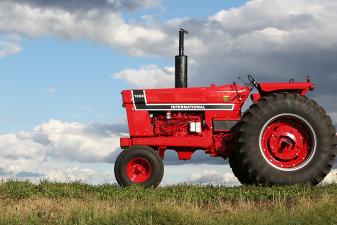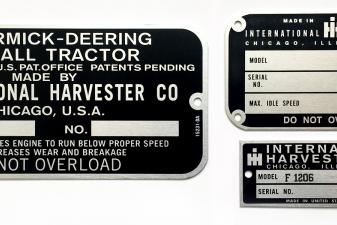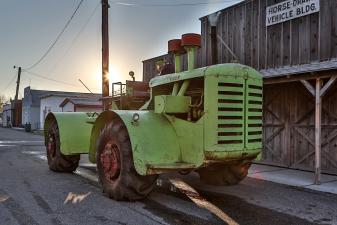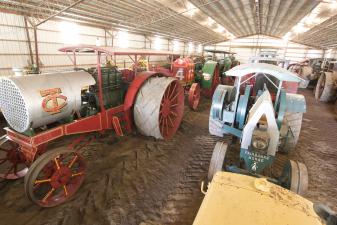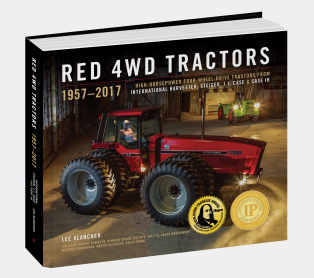Tractor Pioneers and the Hart-Parr 30-60
An Excerpt from TRACTOR

The period of 1900 to 1920 constitutes the belle epoch of tractor history—a time when innovation burst out of the gates in a flurry of hair-brained schemes, backyard inventions, and rule-breaking ingenuity. Learn about the pioneers of tractor history and one of the best models to emerge from the era: the Hart-Parr 30-60, aptly named “Old Reliable.” Read more in this inaugural excerpt from our most anticipated upcoming title, TRACTOR, coming this Fall and available for presale now!
As steam and internal combustion power developed, the tractor was the logical next step in mechanizing the farm. Once it became efficient, powerful, and economical enough to replace horses, oxen, and mules, the tractor allowed a very few people to feed the entire world.
Charting out the trajectory of tractor development begins as one of those simple questions that gets more and more complex the deeper you dig into historical records. Broadly speaking, by the 1890s, a horde of backyard inventors, agricultural equipment manufacturer research and development teams, professors, and crackpots were dreaming about how the emerging technology of motive power could transform the farm.
The paths of the innovators was often complex, with many of them first building for small independents and moving to larger companies, either through acquisition or simply taking a new job once their startup went bust.
The period from 1900 to 1920 was somewhat like the computer boom of the 1970s, or the software boom of the 1990s, with many small players rising and falling and, after a time, fewer companies surviving and thriving in the marketplace (i.e. Apple and IBM in hardware, and Microsoft in software).
By 1938, the market would settle down into roughly a dozen major players and another few dozen specialty makers. At the first part of the 20th century, however, a large cast of colorful innovators designed hundreds of machines ranging from the sublime to the ridiculous.
The technology was changing rapidly, and the rules for what constituted an effective tractor were being written, rewritten and broken on a regular basis. Most of the major innovations in internal combustion and motive power were conceived between 1890 and 1920, and the agricultural machines from this time period are some of the most fascinating agricultural machines ever created.
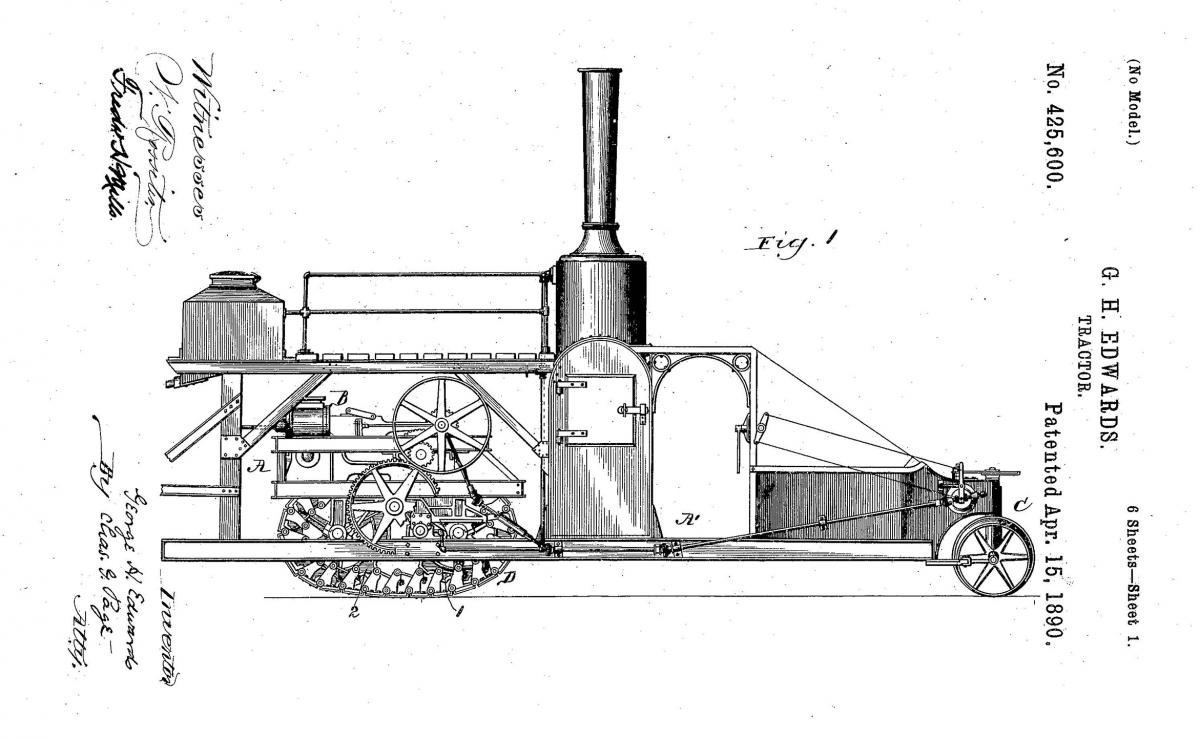 This 1890 patent is one of the first known recorded uses of the term “tractor” to describe an agricultural powered vehicle. U.S. Patent Office
This 1890 patent is one of the first known recorded uses of the term “tractor” to describe an agricultural powered vehicle. U.S. Patent Office
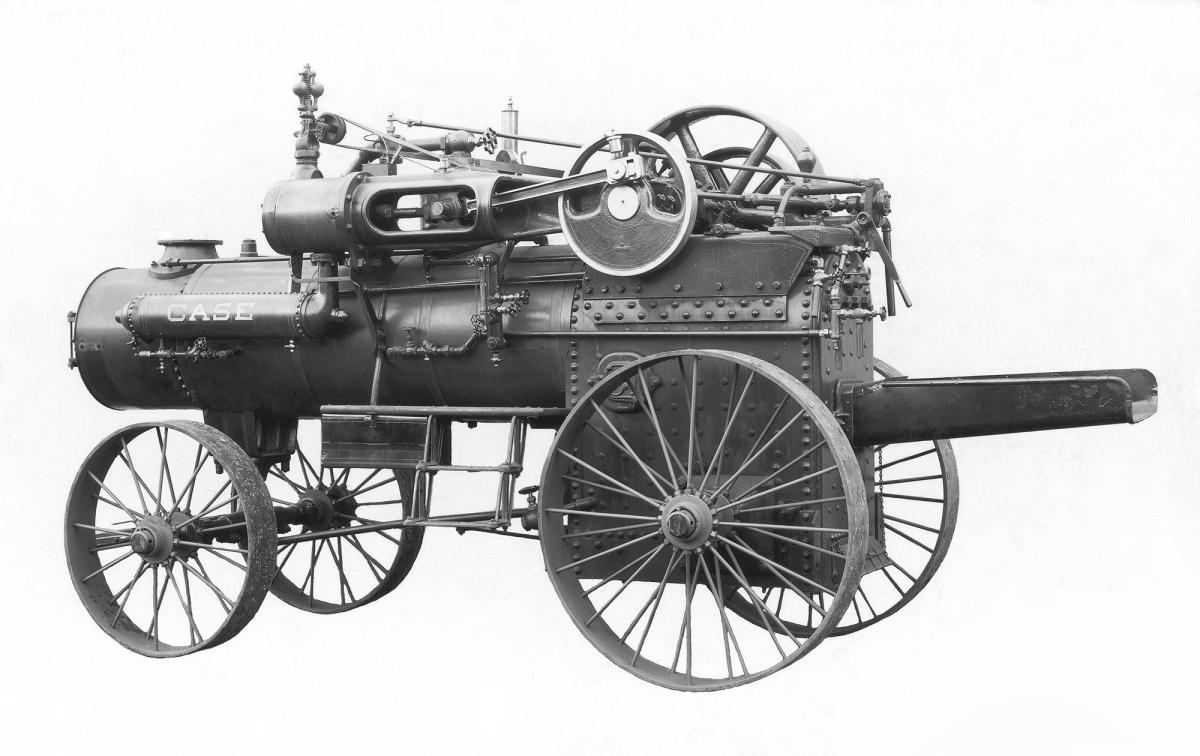 The earliest form of motive power on the farm was provided by steam engines on carts. Case IH
The earliest form of motive power on the farm was provided by steam engines on carts. Case IH
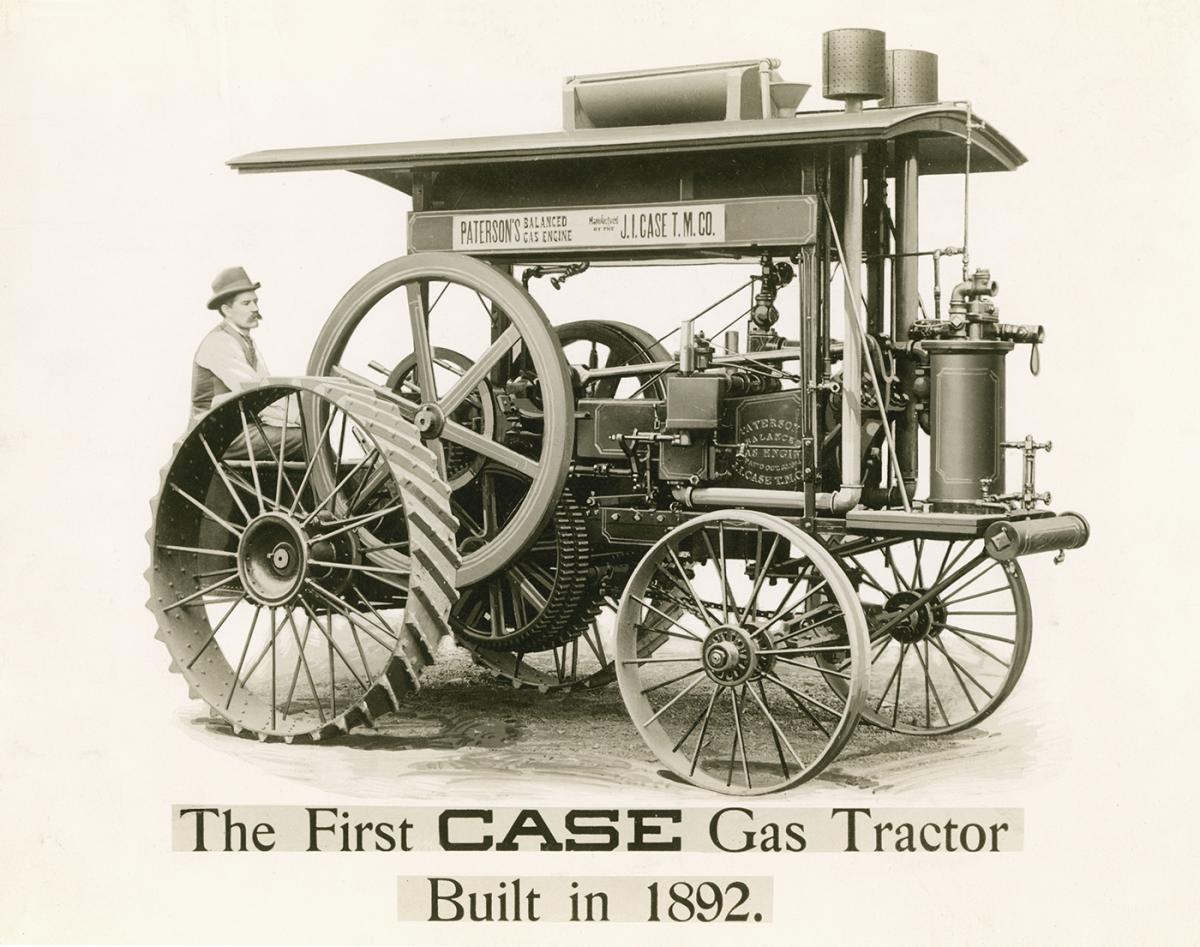 By the early 1890s, makers large and small experimented with internal combustion-powered machines, like this experimental Case tractor from 1892. J. I. Case
By the early 1890s, makers large and small experimented with internal combustion-powered machines, like this experimental Case tractor from 1892. J. I. Case
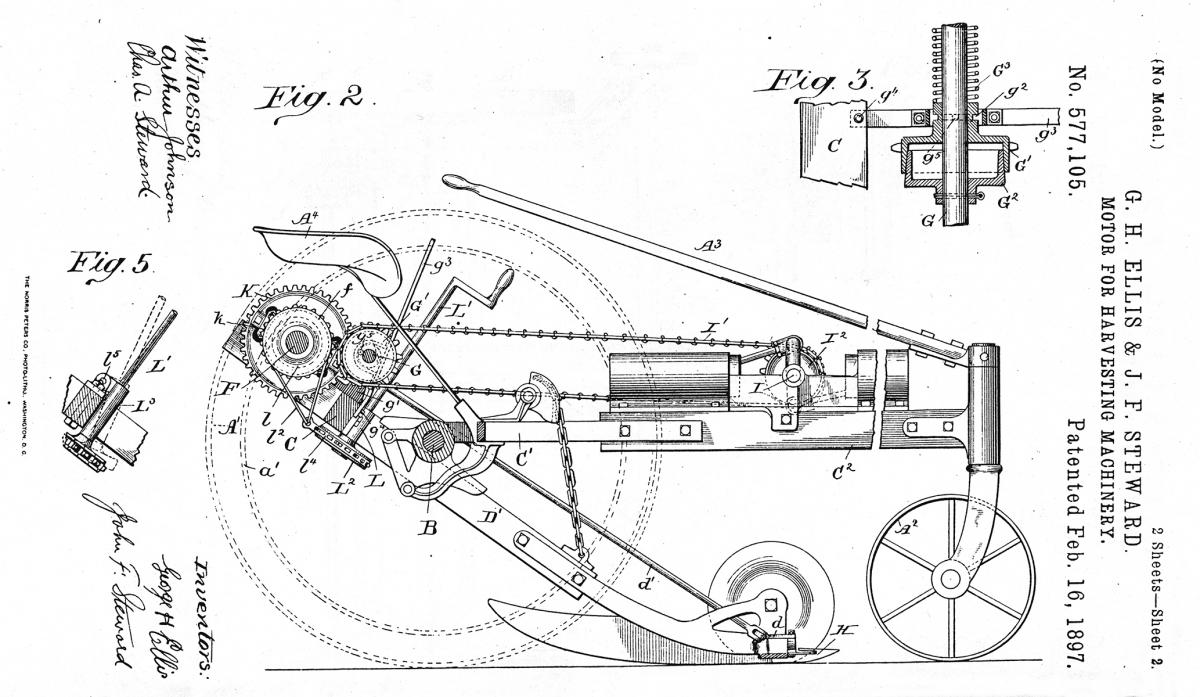 Early designs of tractors were drawn by engineers who worked for large implement companies. This drawing was done by Deering Harvester Company engineers George H. Ellis and John F. Steward. Wisconsin Historical Society #115083
Early designs of tractors were drawn by engineers who worked for large implement companies. This drawing was done by Deering Harvester Company engineers George H. Ellis and John F. Steward. Wisconsin Historical Society #115083
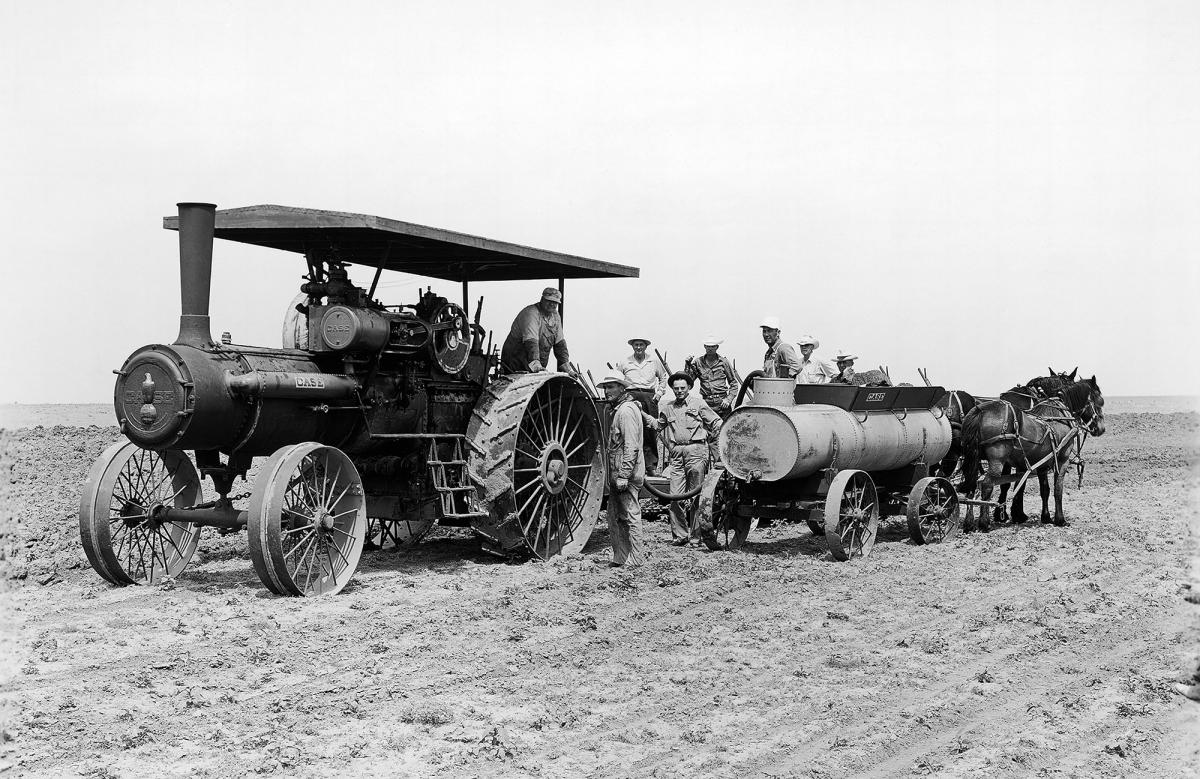 As steam developed motive power, so did agricultural steam tractors. J. I. Case eventually offered massive steamers that had up to 150 horsepower. Case IH
As steam developed motive power, so did agricultural steam tractors. J. I. Case eventually offered massive steamers that had up to 150 horsepower. Case IH
TRACTOR PIONEER PROFILE: Hart-Parr Company
ORIGIN: Charles City, Iowa
MODEL: 1916 Hart-Parr Model 30-60
After introducing the No. 1, the Hart-Parr Company began selling internal combustion tractors sporadically. It was one of just a handful of companies selling these machines, and the pioneers found themselves battling the steam tractor industry’s efforts to suppress its advertisements.
In 1905, Hart and Parr decided to go all in. They stopped the manufacture of stationary engines and committed wholeheartedly to building internal combustion tractors. The move proved wise. Despite expanding their factory and running the plant day and night, the growing company still wasn’t able to keep up with the demand for its machines. By the close of 1906, the company had built and sold more than 500 Hart-Parr tractors.
The next year, the Hart-Parr 30-60 was introduced. It would come to bear the moniker “Old Reliable,” due to the maker’s reputation for consistent performance. Expansion continued into 1909, and with the sales network growing across the globe, the company even briefly experimented with car manufacture, building at least two prototypes.
The company’s growth was increasing so much that housing in Charles City became a severe problem. The company employed more people than the town could accommodate, and Hart-Parr built a hotel strictly to house and entertain its single male employees.
By 1910, Hart-Parr was the dominant maker of internal combustion tractors, with several sources crediting the company with selling more than 70 percent of the market. Whatever the number, Hart-Parr was the early market leader in internal combustion tractor manufacture, a position it would hold until a tidal wave of competition and questionable management changed its fortunes.
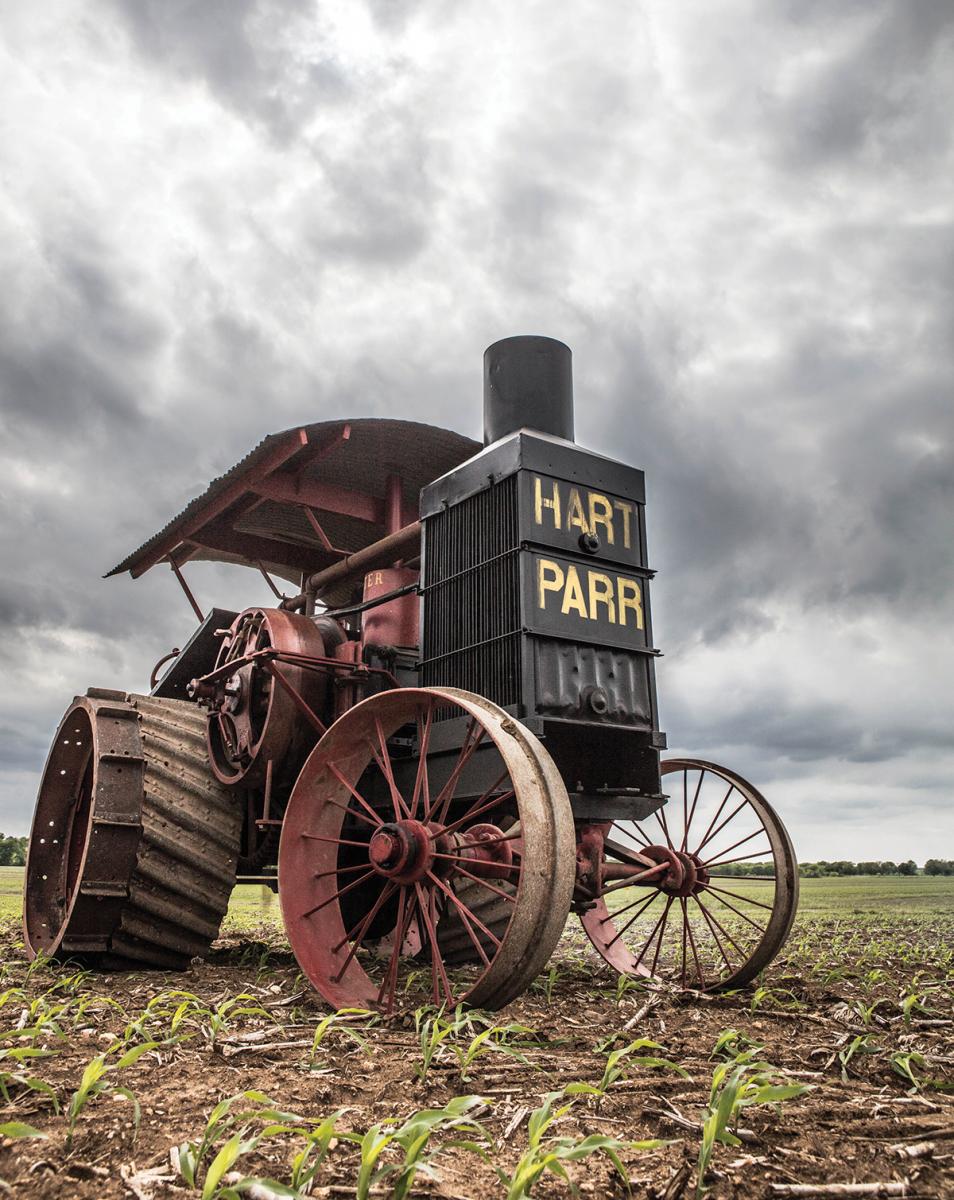 The Hart-Parr 30-60 was one of the most popular early tractors ever made, with more than 3,700 built and sold between 1907 and 1918. Louie Buice Collection / Lee Klancher
The Hart-Parr 30-60 was one of the most popular early tractors ever made, with more than 3,700 built and sold between 1907 and 1918. Louie Buice Collection / Lee Klancher
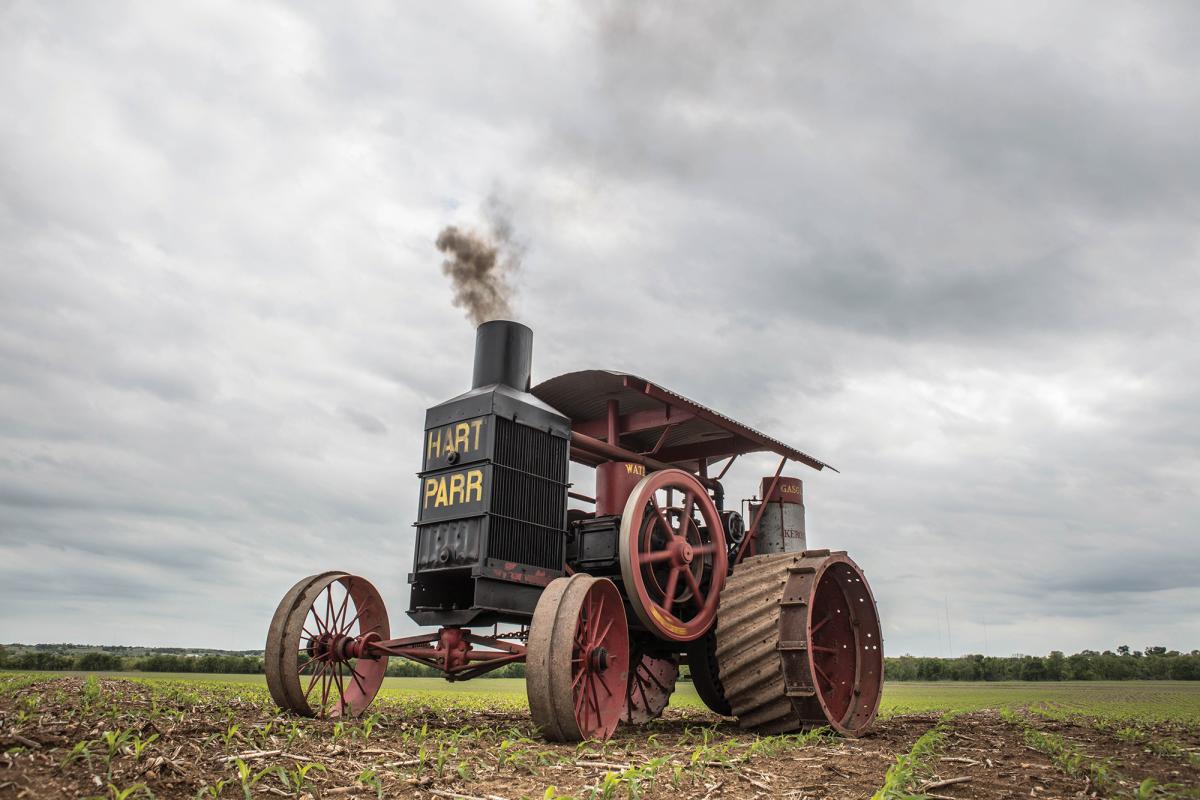 This Hart-Parr 30-60 was built in 1915. The twin-cylinder engine has a 10-inch bore and 12-inch stroke, and displaces 1,885 cubic inches. Louie Buice Collection / Lee Klancher
This Hart-Parr 30-60 was built in 1915. The twin-cylinder engine has a 10-inch bore and 12-inch stroke, and displaces 1,885 cubic inches. Louie Buice Collection / Lee Klancher
Check back on the Octane FUEL Blog for more tractor-history ingenuity on June 27. Till then, find Tractor on our website HERE.
As steam and internal combustion power developed, the tractor was the logical next step in mechanizing the farm. Once it became efficient, powerful, and economical enough to replace horses, oxen, and mules, the tractor allowed a very few people to feed the entire world.
Charting out the trajectory of tractor development begins as one of those simple questions that gets more and more complex the deeper you dig into historical records. Broadly speaking, by the 1890s, a horde of backyard inventors, agricultural equipment manufacturer research and development teams, professors, and crackpots were dreaming about how the emerging technology of motive power could transform the farm.
The paths of the innovators was often complex, with many of them first building for small independents and moving to larger companies, either through acquisition or simply taking a new job once their startup went bust.
The period from 1900 to 1920 was somewhat like the computer boom of the 1970s, or the software boom of the 1990s, with many small players rising and falling and, after a time, fewer companies surviving and thriving in the marketplace (i.e. Apple and IBM in hardware, and Microsoft in software).
By 1938, the market would settle down into roughly a dozen major players and another few dozen specialty makers. At the first part of the 20th century, however, a large cast of colorful innovators designed hundreds of machines ranging from the sublime to the ridiculous.
The technology was changing rapidly, and the rules for what constituted an effective tractor were being written, rewritten and broken on a regular basis. Most of the major innovations in internal combustion and motive power were conceived between 1890 and 1920, and the agricultural machines from this time period are some of the most fascinating agricultural machines ever created.
 This 1890 patent is one of the first known recorded uses of the term “tractor” to describe an agricultural powered vehicle. U.S. Patent Office
This 1890 patent is one of the first known recorded uses of the term “tractor” to describe an agricultural powered vehicle. U.S. Patent Office  The earliest form of motive power on the farm was provided by steam engines on carts. Case IH
The earliest form of motive power on the farm was provided by steam engines on carts. Case IH  By the early 1890s, makers large and small experimented with internal combustion-powered machines, like this experimental Case tractor from 1892. J. I. Case
By the early 1890s, makers large and small experimented with internal combustion-powered machines, like this experimental Case tractor from 1892. J. I. Case Early designs of tractors were drawn by engineers who worked for large implement companies. This drawing was done by Deering Harvester Company engineers George H. Ellis and John F. Steward. Wisconsin Historical Society #115083
Early designs of tractors were drawn by engineers who worked for large implement companies. This drawing was done by Deering Harvester Company engineers George H. Ellis and John F. Steward. Wisconsin Historical Society #115083  As steam developed motive power, so did agricultural steam tractors. J. I. Case eventually offered massive steamers that had up to 150 horsepower. Case IH
As steam developed motive power, so did agricultural steam tractors. J. I. Case eventually offered massive steamers that had up to 150 horsepower. Case IHTRACTOR PIONEER PROFILE: Hart-Parr Company
ORIGIN: Charles City, Iowa
MODEL: 1916 Hart-Parr Model 30-60
After introducing the No. 1, the Hart-Parr Company began selling internal combustion tractors sporadically. It was one of just a handful of companies selling these machines, and the pioneers found themselves battling the steam tractor industry’s efforts to suppress its advertisements.
In 1905, Hart and Parr decided to go all in. They stopped the manufacture of stationary engines and committed wholeheartedly to building internal combustion tractors. The move proved wise. Despite expanding their factory and running the plant day and night, the growing company still wasn’t able to keep up with the demand for its machines. By the close of 1906, the company had built and sold more than 500 Hart-Parr tractors.
The next year, the Hart-Parr 30-60 was introduced. It would come to bear the moniker “Old Reliable,” due to the maker’s reputation for consistent performance. Expansion continued into 1909, and with the sales network growing across the globe, the company even briefly experimented with car manufacture, building at least two prototypes.
The company’s growth was increasing so much that housing in Charles City became a severe problem. The company employed more people than the town could accommodate, and Hart-Parr built a hotel strictly to house and entertain its single male employees.
By 1910, Hart-Parr was the dominant maker of internal combustion tractors, with several sources crediting the company with selling more than 70 percent of the market. Whatever the number, Hart-Parr was the early market leader in internal combustion tractor manufacture, a position it would hold until a tidal wave of competition and questionable management changed its fortunes.
 The Hart-Parr 30-60 was one of the most popular early tractors ever made, with more than 3,700 built and sold between 1907 and 1918. Louie Buice Collection / Lee Klancher
The Hart-Parr 30-60 was one of the most popular early tractors ever made, with more than 3,700 built and sold between 1907 and 1918. Louie Buice Collection / Lee Klancher This Hart-Parr 30-60 was built in 1915. The twin-cylinder engine has a 10-inch bore and 12-inch stroke, and displaces 1,885 cubic inches. Louie Buice Collection / Lee Klancher
This Hart-Parr 30-60 was built in 1915. The twin-cylinder engine has a 10-inch bore and 12-inch stroke, and displaces 1,885 cubic inches. Louie Buice Collection / Lee Klancher Check back on the Octane FUEL Blog for more tractor-history ingenuity on June 27. Till then, find Tractor on our website HERE.


